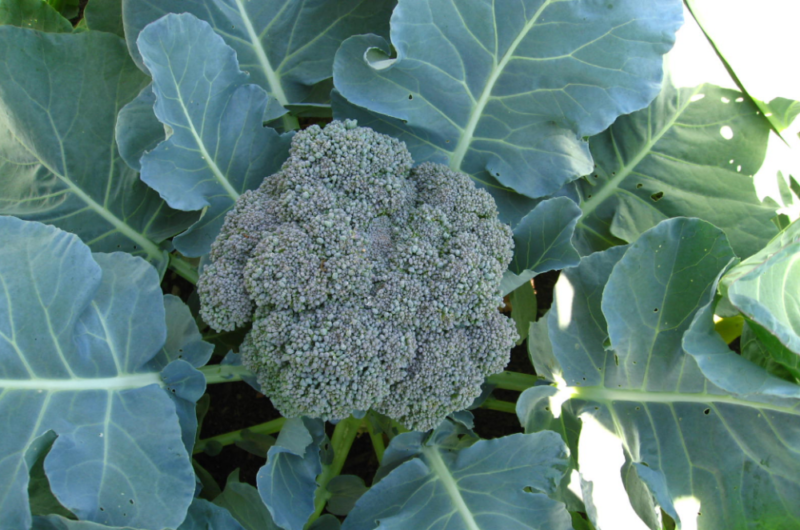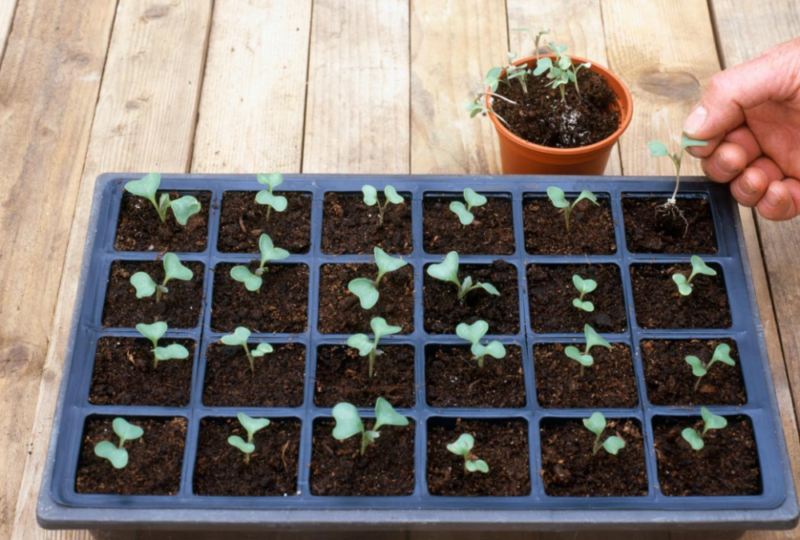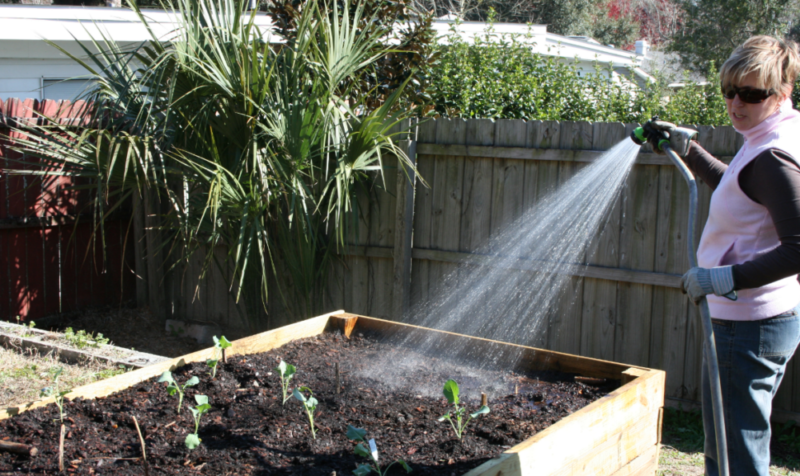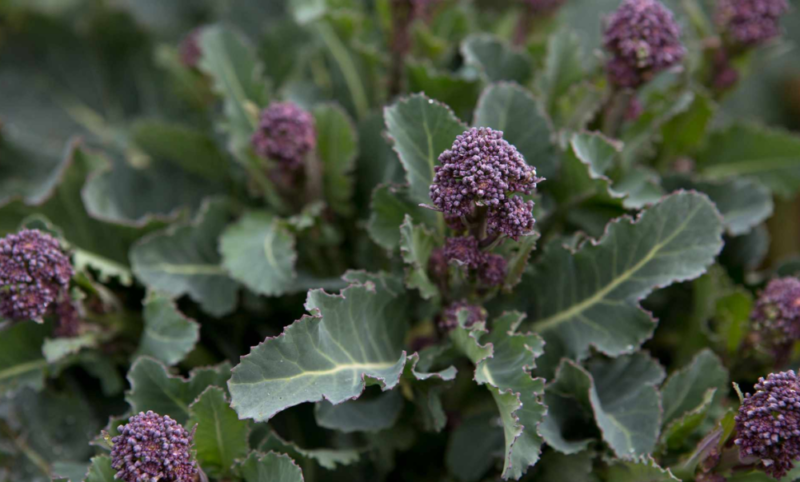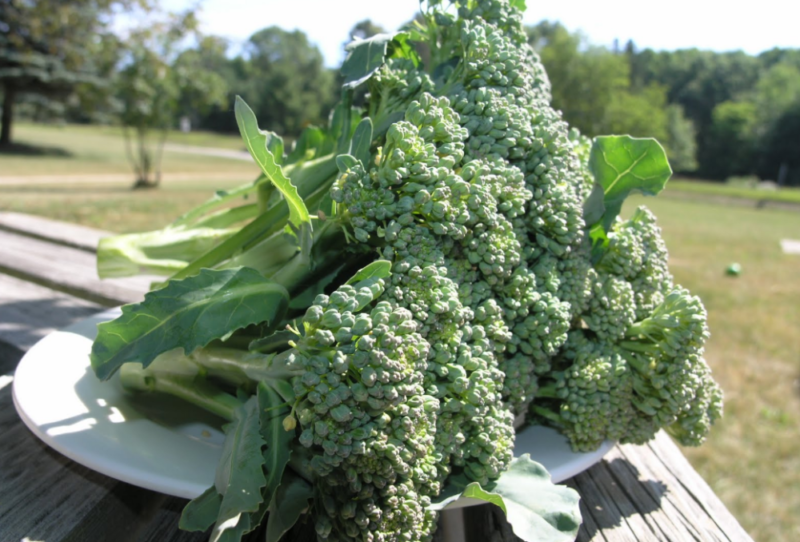Broccoli is an artificially produced variety of cauliflower. It differs from its ancestress by its unusual green, often with a purple tint, a hint of head of cabbage inflorescences and a taste reminiscent of asparagus, for which it received another name - “asparagus cabbage”. The exotic appearance of this vegetable contributed to the formation of opinions about the difficulties of its cultivation in open ground. However, this is not true. How to grow broccoli - this will be discussed in the article.
Material Content:
Features of growing broccoli
Asparagus cabbage is grown according to the same canons as cauliflower.
Of course, growing broccoli has certain nuances, for example, the following is important:
- competently choose a variety;
- properly planted;
- provide the plant with appropriate care;
- Harvest on time.
A feature of the development of asparagus cabbage is that most varieties after cutting the main head or head of cabbage actively form lateral inflorescences. This process lasts until the first frost. This ensures a large crop.
The best varieties for central Russia
Of the 200 varieties of broccoli, making a choice is not easy.
The situation is greatly simplified by the difference between hybrids in terms of head maturation:
- early ripening varieties need 60-90 days;
- mid-season need from 90 to 100;
- late ripening - 130-145.
Given the duration of the summer of the middle lane, it is worth limiting your choice to early and mid-ripening hybrids.
Among the early varieties, the most popular are:
- "Tone" - domestic variety with small (150-200 g) dark green, sometimes with a brown tint, medium-density heads with excellent taste and high (3-4 kg / sq. M.) Yield.The variety is resistant to low temperatures and lack of sunlight.
- "Curly head" - Russian hybrid with large (600 g) round-shaped inflorescences. Productivity - up to 2.5 kg / sq. m. It tolerates adverse weather conditions. Rarely sick and affected by pests, stored for a long time.
- Vyarus - Polish variety with small (110-130 g) dense tuberous gray-green heads with a yield of 3 kg / sq. m. Broccoli varieties "Vyarus" tolerates long periods of summer coolness and heat.
In the middle zone of Russia mid-ripening varieties are also successfully cultivated:
- Fiesta F1 - Dutch hybrid with vertical rosettes of long blue-green leaves, characterized by a wavy edge and pronounced pimply. Forms dense slightly flattened heads of dark green with a blue tint weighing up to 1.5 kg. Does not form side heads. It tolerates drought well. Rarely sick and damaged by pests.
- Monterey F1 - Another Dutch hybrid with a raised rosette of gray-green with a wavy edge of speckled leaves. It forms round-flat and dense gray-green heads of various sizes (from 600 g to 1.9 kg). It is characterized by the absence of secondary heads of cabbage, high (3.6 kg / sq. M.) Productivity and unpretentiousness.
- Gnome - a domestic compact hybrid with a socket of medium-sized gray-green, slightly pimply and wavy along the edge of the leaves, covered with a waxy coating. It forms small (300-500 g) and dense, round-oval heads of gray-greenish tint. After cutting the main head forms good heads on the side branches. Productivity - up to 2.5 kg / sq. m
Outdoor landing
Broccoli can be sown in open ground or grown from seedlings. For the middle part of Russia, the seedling method is more effective.
Before sowing the seeds are treated:
- disinfect: soak for 30 min in a warm (about 50 ° C) solution of potassium permanganate of low concentration or any fungicide, for example, Fitosporin;
- at least 12 hours incubated in a solution of a drug that stimulates growth (Epin, Kornevin);
- dried and hardened by placing in the refrigerator for a day.
Sowing seedlings is carried out in late March, early April, having previously prepared containers and land:
- it is convenient to use containers with individual cells, peat tablets or cups. This will avoid picking.
- The substrate is made up of equal parts of garden soil, peat, humus and sand. The soil must be disinfected: calcined or shed with a solution of Fitosporin or potassium permanganate.
Seeds are laid out on moist earth in small (up to 1.5 cm) recesses made every 3 cm, and sprinkled with earth.
Crops are placed in a moderately warm (20 ° C) room, and when shoots appear, they are transferred to a cooler (14-16 ° C) place. After 1-1.5 months, when 4-5 leaves are formed on seedlings, they are planted on beds.
For growing broccoli, slightly shaded areas with fertile neutral or alkaline soils are suitable. From the autumn, they dig the earth, release it from weeds, loosen it and fertilize it. For each square. m. a bucket of organic matter (manure, humus, humus).
Seedlings are planted in the second decade of May:
- at a distance of 30-40 cm dig holes with a depth of 40-50 cm. Between the rows leave 45-60 cm;
- before planting, 2 tbsp are poured into each hole tablespoons of superphosphate, 1 teaspoon of urea and 2 cups of ash;
- a seedling with an earthen lump is removed from the container, placed in a hole and sprinkled with earth to the first pair of leaves.
After planting, plants are abundantly (to a depth of 30 cm) watered and shaded from the sun for 7-10 days.
Cabbage care
Caring for asparagus cabbage is not burdensome and consists in performing activities traditional for vegetable growers.
First of all, these are:
- timely removal of weeds that provoke the emergence and spread of infections, the invasion of pests and "stealing" nutrients in the main culture;
- loosening, which is carried out after watering and helps to reduce evaporation, as well as the penetration of air to the roots;
- hilling, necessary for the growth of additional subordinate roots, significantly increasing the suction surface and giving the plants greater stability.
Important! Broccoli spud 2 times: 20 days after planting in the beds and 10 days after the first hilling.
It is impossible to get a high yield of broccoli without watering. This is especially important at the stage of formation of inflorescences and in the heat. At this time, the plants are watered every other day. In other cases, 1 abundant (to a depth of 15 cm) moistening in 5-7 days is enough. Watering is carried out in the evening with water heated daily in the sun.
Broccoli dressing
Broccoli grows rapidly, rapidly consuming nutrients introduced before planting, so it needs to be fed.
They are carried out 2 times:
- 3-4 weeks after planting, organic matter is introduced - infusion of mullein (1 part per 10 l of water) or chicken droppings (1/20);
- after 2 weeks, organic feeding is repeated;
- during the formation of inflorescences, a solution of mineral additives (40 g of superphosphate, 20 g of ammonium nitrate and 10 g of potassium dissolved in 10 l of water) is added.
For varieties forming one head, such a scheme is sufficient. If, after cutting off the main inflorescence, the plant is formed laterally, another additional stimulating top dressing is carried out with a solution prepared from 30 g of potassium sulfate, 20 g of superphosphate and 10 g of nitrate per 10 l of water.
Disease and Pest Control
Broccoli, like any other cabbage, is often sick. The most dangerous diseases are fungal infections.
The causative agent penetrates into the cells of root tissues, causing their irreversible changes:
- The black leg affects seedlings and is manifested by darkening and softening of the base of the shoot, which leads to the death of the plant.
- The keel is accompanied by the formation of shapeless growths on the roots. If the plant survives, it becomes a source of infection.
- Alternariosis is diagnosed by the appearance of leaf blotch and loss of turgor.
A sure way to avoid the development of fungal infection is pre-planting disinfection of the soil and seed treatment with fungicides, timely thinning seedlings and compliance with the irrigation regime. If you still could not avoid the occurrence of infection, plantings are treated with antifungal drugs: Fitosporin, Bactofit.
Juicy leaves of asparagus cabbage attract many insects that feed on its juices. The most dangerous are cabbage aphids, cruciferous fleas and slugs. To prevent the invasion of pests, planting young plants is covered with a non-woven fabric. Adult forms are saved by sprinkling ash or tobacco dust between rows, sprayed with aqueous solutions of insecticides (Spark, Actellik, Foxim).
Harvesting and storage
When growing asparagus cabbage, it is important not to miss the moment of ripening of the inflorescences and to harvest in time. Even slight, for 2 or 3 days, tightening is fraught with the appearance of buds and loss of taste.
The first heads of early varieties of broccoli ripen in the second half of summer and are stored for no more than 7-10 days if placed in a cool place. Inflorescences collected in the fall retain freshness for up to 3 months. Broccoli does not lose its beneficial properties when frozen, and this is one of the most convenient ways to store it.
It remains to add that asparagus is tasty and very healthy. It will help to diversify the winter menu, maintain harmony and youth. Try to grow broccoli in the garden!



